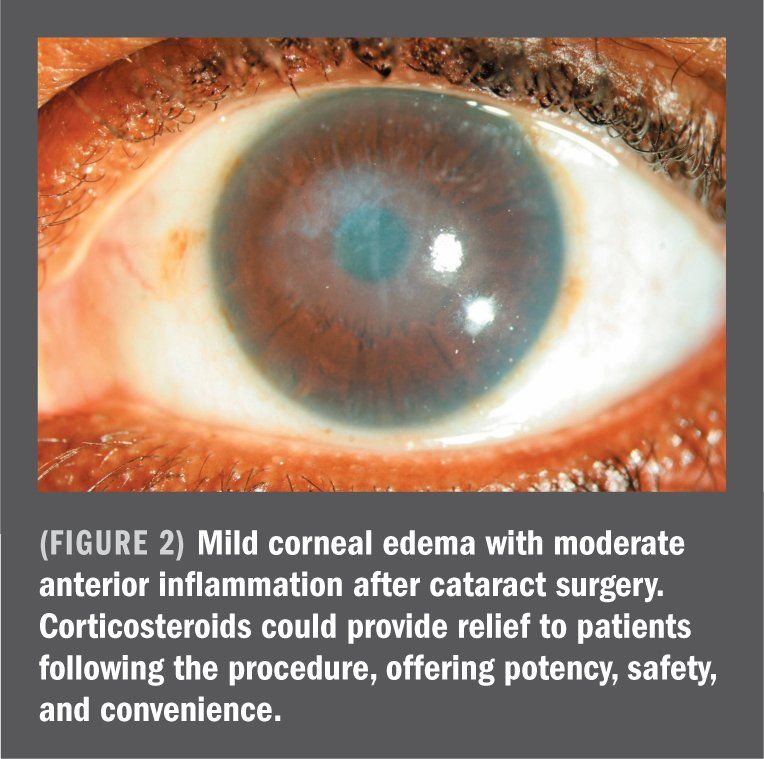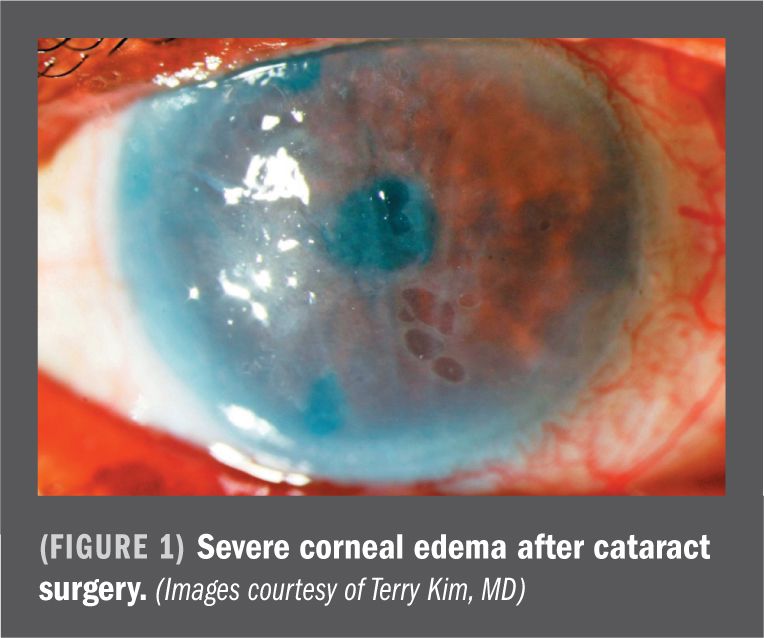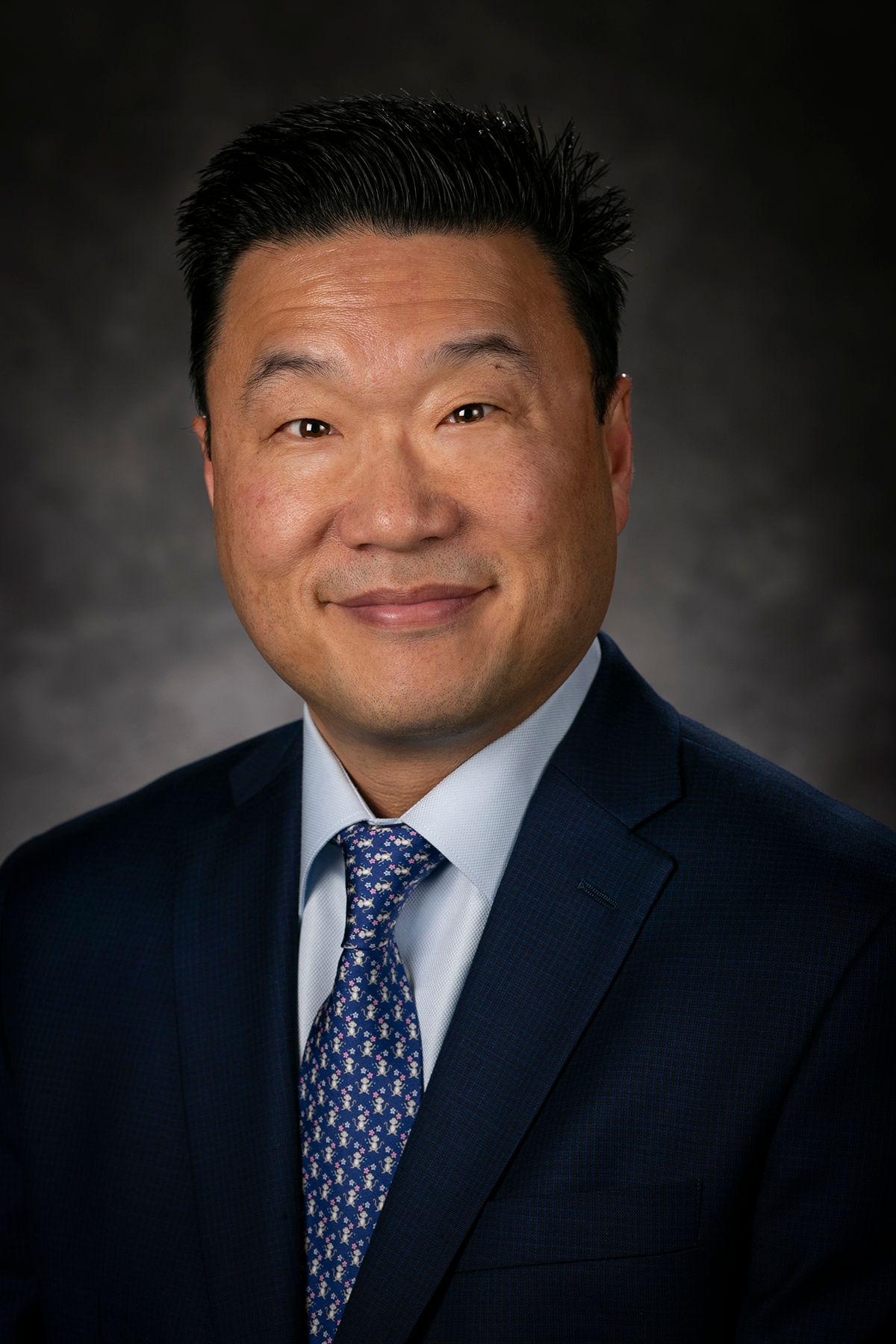Article
Considering BID ocular steroid post-cataract surgery
Author(s):
Novel agent with mucus-penetrating nanoparticle marries potency, safety, convenience


Inflammation can be an issue after cataract surgery, and it is important that it be controlled. Corticosteroids may prove to be the best option.
In ocular surgery, with penetrating incisions, we inevitably still face postoperative inflammation and pain. Now, a novel potent corticosteroid formulation could help improve that aspect of cataract surgery as well, with enhanced penetration and an easier-to-follow dosing regimen.
Role of corticosteroids
It is important to bring inflammation under control after surgery, and corticosteroids are one option. Left untreated (or undertreated), persistent anterior chamber inflammation can result in complications ranging from photophobia and decreased vision to corneal edema, persistent iritis, and cystoid macular edema (CME). In a study by Porela-Tiihonen S, et al., up to 35% of cataract surgery patients experienced moderate to severe pain during the hours after surgery.
When we see patients on the first postoperative day, we tend to focus on vision and visible signs of inflammation, not on subjective symptoms. While we are happy that the vision is 20/20, we may overlook that the patient may be in pain. There is no reason for my patients to experience pain if I can prevent it.
Challenges
To treat inflammation and pain after surgery, most physicians prescribe a corticosteroid and an NSAID, in addition to an antibiotic to prevent infection. This is an effective combination, and when patients comply with their regimen, preventable complications are rare. However, some options available today do present some challenges.
The first potential problem, in my opinion, is the rash of generics flooding the market, including generic corticosteroids such as prednisolone acetate. Although they meet FDA standards for bioequivalence, they are not as well tested as branded drugs. Another challenge is the potential for some corticosteroids that are effective in reducing inflammation, such as difluprednate, to increase IOP.
Finally, a barrier to effective treatment of pain and inflammation is the dosing of corticosteroids. Patients generally take their antibiotic, corticosteroid, and NSAID drops 3 or 4 times per day, which can amount to 12 drops per day. This can be inconvenient and unpleasant.
Decline in compliance
We presume our patients may miss some doses of their medications after cataract surgery. Thus, not only do we need to select the drug we think will be most effective, but we also need to educate patients about the potential risks associated with failing to use the corticosteroid drops QID for the full prescribed duration.
Bid corticosteroid option
The recent introduction of a new corticosteroid formulation, loteprednol etabonate ophthalmic suspension 1% (Inveltys, Kala), addresses some of the challenges we have faced with corticosteroids for cataract patients. Approved for treatment of inflammation and pain following eye surgery, this novel nanoparticle formulation with proprietary technology (Amplify, Kala) offers a clear set of advantages.
This delivery mechanism offers the superior penetration we need to give patients the best of all worlds: potent and effective control of pain and inflammation, low IOP concerns, and the added benefit of BID dosing.
Looking ahead
Given the potency, efficacy and safety of the loteprednol etabonate ophthalmic suspension 1% formulation, the mucus-penetrating particle may one day make it the preferred choice for control of inflammation and pain after a range of ophthalmic procedures, such as corneal transplantation, refractive surgery, MIGS procedures, and more.
Disclosures:

Terry Kim, MD
E: terry.kim@duke.edu
Dr. Kim is a professor of Ophthalmology at Duke University School of Medicine, chief of the Cornea and External Disease Division, and director of Refractive Surgery Services at Duke Eye Center in Durham, NC.





